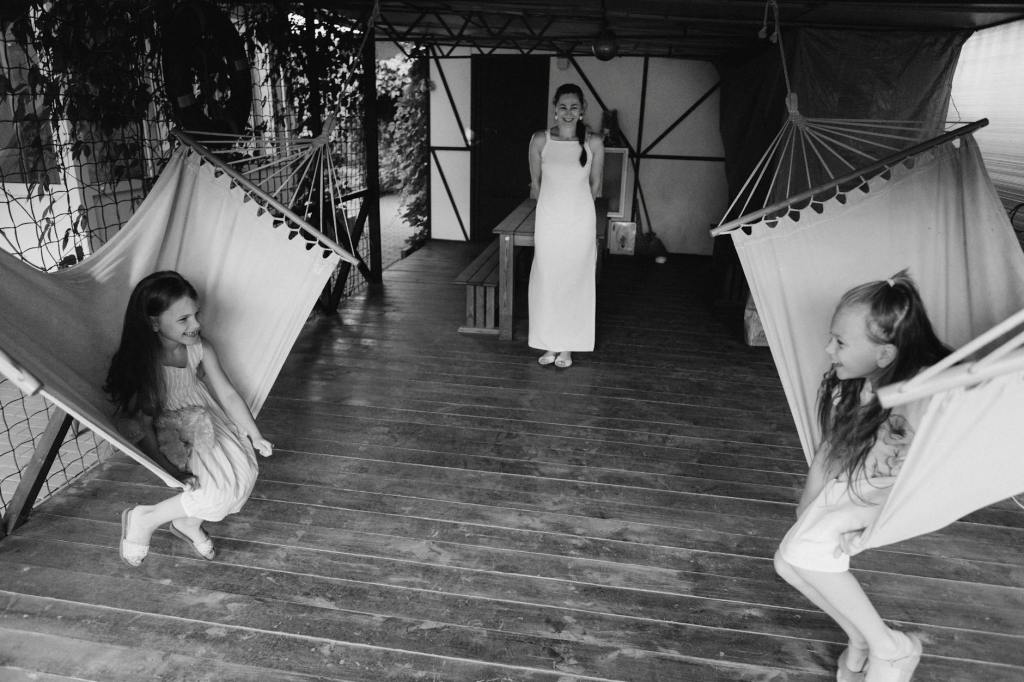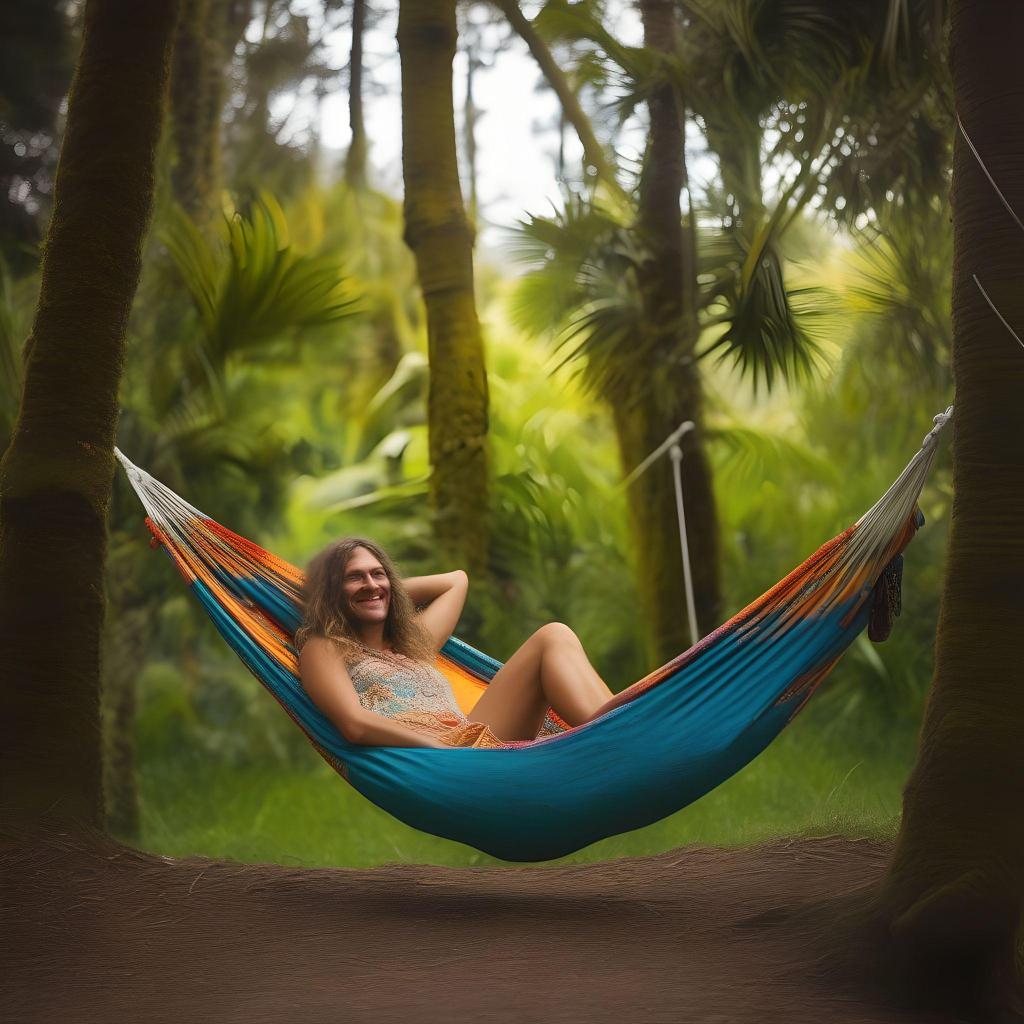Hammocks have been a popular leisure item for centuries, providing a comfortable and relaxing way to enjoy the outdoors. However, they have also made appearances in some of the most famous films of all time. From action-packed adventures to romantic comedies, hammocks have played a role in enhancing the atmosphere of many movies.

One of the most iconic uses of a hammock in film is in the classic adventure movie, Indiana Jones and the Temple of Doom. In the film, Indiana Jones and his companions are seen resting in hammocks while taking a break from their intense journey. The scene not only adds a touch of relaxation to the otherwise action-packed film, but it also highlights the practicality of hammocks in outdoor settings.
Another memorable use of hammocks in film is in the romantic comedy, The Proposal. In the movie, the two main characters, played by Sandra Bullock and Ryan Reynolds, share a romantic moment while lying in a hammock overlooking a beautiful landscape. The hammock adds to the romantic atmosphere of the scene, creating a sense of intimacy and relaxation.
Hammocks in Classic Cinema

The Golden Age: Hammocks in the 1930s to 1950s
The 1930s to 1950s were considered the Golden Age of cinema, and hammocks played a significant role in some of the era’s most iconic films. In the 1930s, the romantic drama “The Maltese Falcon” featured a scene where Humphrey Bogart and Mary Astor relax in a hammock while discussing the mysterious bird.
Another classic film from this era that prominently featured a hammock was “Casablanca.” In one scene, Ingrid Bergman lounges in a hammock as she and Humphrey Bogart discuss their past romance. The scene is a testament to the cultural significance of hammocks as a symbol of relaxation and leisure.
Hammocks and Film Noir
In the film noir genre, hammocks were often used to create an atmosphere of suspense and tension. In the 1940s, “Double Indemnity” features a scene where Fred MacMurray and Barbara Stanwyck sit in a hammock, discussing their plan to murder Stanwyck’s husband. The hammock adds a layer of unease to the scene, as the characters’ actions are contrasted with the peaceful setting.
Iconic Hammock Scenes in Westerns and Adventures
Hammocks were also a common sight in Westerns and adventure films. In the 1950s film “River of No Return,” Marilyn Monroe lounges in a hammock while Robert Mitchum prepares a raft for their journey down the river. The scene highlights the contrast between Monroe’s beauty and the rugged wilderness surrounding them.
In the classic Western “The Good, the Bad and the Ugly,” Clint Eastwood’s character, Blondie, takes a nap in a hammock while waiting for his next bounty. The hammock serves as a symbol of relaxation and ease, contrasting with the dangerous and violent world of the Wild West.
Overall, hammocks have played a significant role in classic cinema, representing relaxation, leisure, and even danger. From romantic dramas to Westerns, the hammock has become an iconic symbol in film, reflecting the culture and values of the era.
Modern Films Featuring Hammocks
Hammocks in Contemporary Genres
In recent years, hammocks have made their way into contemporary film genres, adding a touch of relaxation and leisure to the screen. In the 2000s, the romantic comedy film “The Holiday” features a scene where Kate Winslet’s character, Iris, lounges in a hammock while on vacation in Los Angeles. The hammock serves as a symbol of her character’s desire to escape her mundane life and find happiness.
Another contemporary film that features a hammock is “The Tree of Life” from 2011. In this drama film, the protagonist, played by Brad Pitt, is seen relaxing in a hammock while contemplating the meaning of life. The hammock serves as a visual representation of the character’s search for peace and understanding.
Hammocks in Animation and Family Films
Hammocks have also made appearances in family-friendly films and animations. In the classic Disney film “Pinocchio” from the 1940s, the character Geppetto relaxes in a hammock while carving a wooden puppet. The hammock serves as a symbol of Geppetto’s peaceful and simple life.
In the more recent animation film “Toy Story 3” from 2010, the character Hamm, a piggy bank, is seen lounging in a hammock in the backyard of Andy’s house. The hammock adds a touch of relaxation and leisure to the scene, while also showcasing Hamm’s laid-back personality.
Overall, hammocks have become a popular visual element in modern films, adding a touch of relaxation and leisure to the screen. Whether it’s a contemporary drama or a family-friendly animation, hammocks have proven to be a versatile and iconic prop in the world of cinema.
Hammocks in International and Art House Cinema
European Films and the Hammock Motif
Hammocks have been used as a recurring motif in European films, often symbolizing relaxation, leisure, and a carefree lifestyle. One of the most iconic examples is Federico Fellini’s “La Dolce Vita” (1960), where a hammock is featured in a scene where the protagonist, Marcello, lounges in his garden, surrounded by beautiful women and champagne. The hammock is a visual representation of the hedonistic lifestyle that Marcello and his friends enjoy.
Another notable example is Akira Kurosawa’s “Seven Samurai” (1954), where a hammock is used as a makeshift hospital bed for one of the wounded samurai. The hammock symbolizes the fragility of life and the need for rest and recovery.
Hammocks in Latin American Cinema
In Latin American cinema, hammocks are often associated with rural life, poverty, and simplicity. In films like “Y Tu Mamá También” (2001) and “Amores Perros” (2000), hammocks are used to depict the humble living conditions of the characters. In “Y Tu Mamá También”, the two main characters, Julio and Tenoch, spend most of their time lounging in hammocks, smoking and talking about life. The hammock is a symbol of their aimless existence and lack of direction.
In contrast, in films like “El Norte” (1983) and “Coco” (2017), hammocks are used to represent tradition, family, and cultural identity. In “El Norte”, the Mayan protagonists use hammocks as their primary mode of sleeping and relaxation, highlighting their connection to their indigenous roots. In “Coco”, the hammock is used as a visual representation of the Mexican tradition of siesta, where families take a break from work and enjoy a nap together.
Overall, hammocks have been used in international and art house cinema to convey a range of themes and emotions, from hedonism and relaxation to poverty and cultural identity. They continue to be a popular visual motif in films from Europe, South America, and beyond, often adding depth and meaning to the story.
Frequently Asked Questions
In which iconic movie scenes have hammocks been prominently featured?
Hammocks have been prominently featured in several iconic movie scenes. One of the most memorable is the scene in the 1969 film “The Graduate” where the protagonist, played by Dustin Hoffman, is seen lounging in a hammock in his parents’ backyard. Another notable example is the 1993 film “Jurassic Park,” where the character played by Jeff Goldblum is seen relaxing in a hammock while the dinosaurs roam nearby.
Which actors have been seen relaxing in hammocks on screen?
Many actors have been seen relaxing in hammocks on screen. Some notable examples include Johnny Depp in “Pirates of the Caribbean: The Curse of the Black Pearl,” Tom Hanks in “Cast Away,” and Angelina Jolie in “Lara Croft Tomb Raider: The Cradle of Life.”
What films set in tropical locations have used hammocks to enhance the setting?
Films set in tropical locations often use hammocks to enhance the setting. Some examples include “The Beach” (2000), “Blue Lagoon” (1980), and “Forgetting Sarah Marshall” (2008).
How have hammocks been symbolically used in film narratives?
Hammocks have been symbolically used in film narratives to represent relaxation, escape, and a carefree lifestyle. In some films, such as “The Descendants” (2011), a hammock is used to symbolize the protagonist’s desire to slow down and enjoy life.
Can you list classic films that included hammocks in their production design?
Classic films that included hammocks in their production design include “Gone with the Wind” (1939), “The Sound of Music” (1965), and “The African Queen” (1951).
What movie adaptations of novels have included scenes with hammocks?
Several movie adaptations of novels have included scenes with hammocks. Examples include “The Great Gatsby” (2013), “The Beach” (2000), and “The Rum Diary” (2011).


Leave a comment